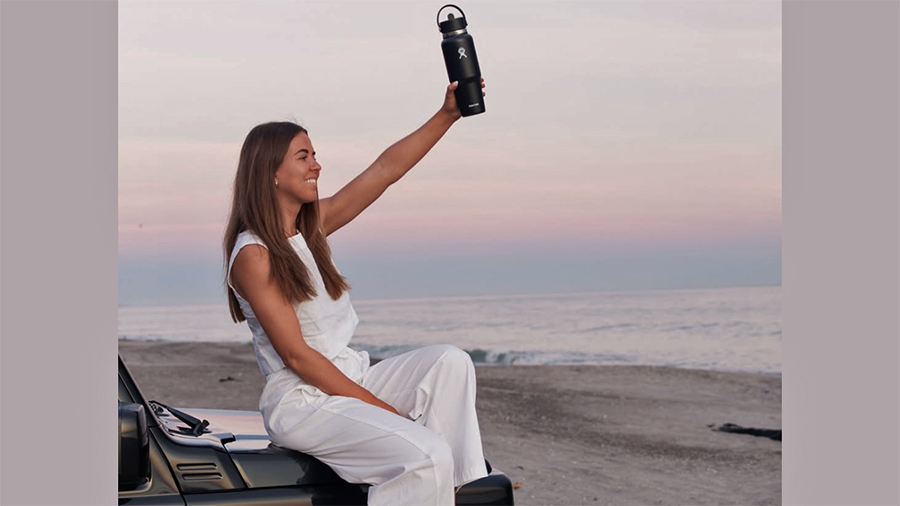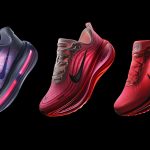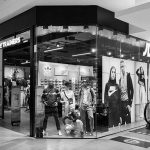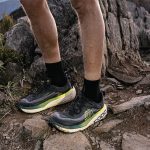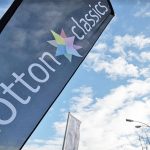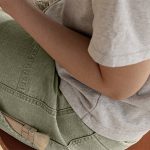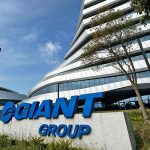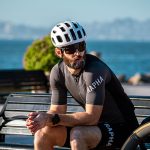Helen of Troy Limited, parent of the Hydro Flask, Osprey and OXO brands, relied on the three brands in the company’s Home & Outdoor for positive momentum in the fiscal third quarter ended November 30, 2024 to partially offset declines in the company’s Beauty & Wellness segment.
Net sales in the Home & Outdoor segment increased 4.3 percent year-over-year to $246.1 million, compared to $235.9 million in the year-ago Q3 period, with growth from all three brands.
The segment sales increase was said to be primarily driven by net gains in retailer distribution in the insulated beverageware and home categories, higher international sales due to new and expanded retailer distribution in the insulated beverageware category and strong demand for technical packs, and an increase in club channel sales in the insulated beverageware category. Those positive factors were said to be partially offset by softer overall consumer demand, lower replenishment orders from retail customers, a decrease in club channel sales in the home category, and continued competition in the insulated beverageware category.
Hydro Flask
Based on commentary on the company’s Q3 conference call with analysts, the “net gains in retailer distribution” for Hydro Flask apparently translates to expansion at Costco, and an expanding test at Target.
“We are pleased with the brand’s positive momentum during the quarter, reflecting our focus on revitalizing the brand through innovation, distribution and marketing,” offered company CEO Noel Geoffrey in his prepared remarks. “Growth in the quarter was driven by initial distribution gains at Target and a new essential hydration tumbler and bottle set offering at Costco.”
Geoffrey suggested that for Hydro Flask it is a little bit too early to tell what will happen in this mass retail and club channels.
“What we do know is in the insulated beverage category, the category is growing in customers like Target and Costco,” Geoffrey noted. “Because as we think about how that category is evolving from sports enthusiasts into more women, Gen Z consumers, et cetera, they shop a lot at those customers. And so we know that’s where the category is growing there. It’s declining or flat in kind of the historic sports and outdoor channel.”
“Clearly, in Home & Outdoor, we’ve gotten some major distribution gains, and they’re into retailers who represent significant category volume. So the potential with that kind of distribution gain to expand our household penetration, our velocity, our market share are really significant,” Geoffrey added.
Hydro Flask e-commerce reportedly “overdelivered” in the quarter, said to be driven by stronger-than-forecasted POS that lifted post Labor Day replenishment and stronger-than-forecasted performance on Amazon Prime Day with Hydro Flask achieving the No. 1 Best Seller ranking within water bottles during the event.
Geoffrey said Hydro Flask continues to win additional shelf space with more permanent placement in both the housewares and sporting goods sections at Target early in the fourth quarter and is extending its presence in Canada. He said the brand also continues to drive engagement through relevant social media content, highlighting its popular seasonal offerings for the holidays.
“Our distribution for Hydro Flask in Target is very initial,” the CEO said. “We have some off-shelf placement. We expect to get broader placement, in fact, it’s kind of shipping now, if you will, in home and the sporting goods. So I think we’ll have a lot more perspective a few months down the line once that takes hold and we see what the velocity is doing. I would say on Costco, we have a little bit more data. I think I mentioned this last quarter that the initial program did show strong velocity such that Costco ordered a replenishment beyond what we initially forecasted for the double pack that we had in Costco.”
Osprey
Geoffrey said Osprey continues its momentum in everyday packs. The Daylite Fall 2024 Travel launch was reportedly “very successful” while helping drive a double-digit sales increase for the Daylite line.
He reminded the participants that the Daylite expandable travel pack has been a top online seller since launch and is receiving strong Amazon reviews.
The brand also did well internationally with growth across all regions.
“We were honored that Osprey was included in Fast Company’s list of Brands That Matter 2024 for the brand’s commitment to sustainability through its use of recycled content in the main body fabric of 98 percent of its textile products, connecting people of all sizes with the outdoors with its extended fit collection and for the brand’s support of local communities.”
Geoffrey said the company also successfully integrated Osprey into its ERP system during the quarter, as well as its distribution network in the U.S. and Europe.
“I am pleased to share that we went live with this integration with minimal issues and have been successfully shipping our Osprey B2B and direct-to-consumer business from these facilities,” he noted. “This is an example of our focus on elevating our operational discipline. I am pleased with the team’s strong planning and execution of this important integration.”
He said Osprey also continues to be strong across all regions and had nice share growth in its extended travel and everyday lifestyle packs.
Home & Outdoor operating income was $40.3 million, or 16.4 percent of segment net sales revenue, in the fiscal Q3 period, compared to $49.5 million, or 21.0 percent of segment net sales revenue, in the prior-year Q3 period.
The decrease in segment operating margin was primarily due to the unfavorable comparative impact of a gain on the sale of the El Paso facility of $16.2 million recognized in the prior-year Q3 period, and higher marketing expense as the segment reinvested back into its brands. These factors were reportedly partially offset by favorable inventory obsolescence expense year-over-year, lower annual incentive compensation expense, and lower commodity and product costs.
Adjusted operating income increased 14.0 percent to $45.3 million, or 18.4 percent of segment net sales revenue, in Q3, compared to $39.8 million, or 16.9 percent of segment net sales revenue, in the prior-year Q3 period.
International
International was again a highlight of the quarter with sales growth of 7.5 percent, primarily driven by strength in Home & Outdoor. Sales were reportedly fueled by distribution expansion in EMEA, APAC and LATAM as the company continues to leverage opportunities to draft off both Osprey and OXO’s strength and create stronger distributor partnerships.
For OXO, growth was said to be driven by distribution gains and continued shelf productivity at Walmart as well as higher international sales driven by growth in EMEA and LATAM. In October, OXO expansion at Walmart continued across kitchen and organization, notably with the introduction of the Pop food storage line in over 2,000 Walmart stores.
Consolidated Company Results
Consolidated net sales revenue decreased 3.4 percent, to $530.7 million, compared to $549.6 million, driven by a decline in Beauty & Wellness, partially offset by an increase in Home & Outdoor.
Consolidated gross profit margin increased 90 basis points to 48.9 percent of net sales, compared to 48.0 percent of net sales in the prior-year Q3 period. The consolidated gross profit margin increase was said to be primarily due to favorable inventory obsolescence expense year-over-year and lower commodity and product costs, partly driven by Project Pegasus initiatives.
Consolidated selling, general and administrative expense (SG&A) ratio increased 620 basis points to 34.0 percent of net sales, compared to 27.8 percent in the year-ago period. The increase in the consolidated SG&A ratio was said to be primarily due to the unfavorable comparative impact of a gain on the sale of the El Paso facility of $34.2 million recognized in the prior-year period, higher marketing expense as the company reinvested back into its brands, and the impact of unfavorable operating leverage. Lower overall personnel expense partially offset these factors, primarily driven by lower annual incentive compensation expense.
Consolidated operating income was $75.1 million, or 14.2 percent of net sales revenue, in the third quarter, compared to $106.9 million, or 19.5 percent of net sales revenue, in the prior-year quarter. The 530 basis-point decrease in consolidated operating margin was primarily due to an increase in the aforementioned consolidated SG&A ratio, partially offset by an increase in consolidated gross profit margin.
Interest expense was $12.2 million, compared to $12.9 million. The decrease in interest expense was primarily due to lower average borrowings outstanding, partially offset by a higher average effective interest rate compared to the same period last year.
Income tax expense as a percentage of income before income tax was 21.4 percent compared to 19.5 percent, reportedly due primarily to the impact of Barbados tax legislation enacted during the first quarter of fiscal 2025 and an increase in tax expense for discrete items, partially offset by the comparative impact of tax expense recognized during the third quarter of fiscal 2024 for the gain on the sale of the El Paso facility and shifts in the mix of income in various tax jurisdictions.
Net income was $49.6 million, or $2.17 per diluted share, in the fiscal Q3 period, compared to $75.9 million, or $3.19 per diluted share, in the year-ago Q3 period. The company said diluted EPS decreased primarily due to lower operating income and an increase in the effective income tax rate, partially offset by lower interest expense and lower weighted average diluted shares outstanding.
Non-GAAP adjusted EBITDA (earnings before interest, taxes, depreciation and amortization) was $96.8 million in fiscal Q3, compared to $97.8 million in the year-ago Q3 period. Non-GAAP adjusted EBITDA margin was 18.2 percent compared to 17.8 percent in Q3 last year.
On an adjusted basis (non-GAAP) for the third quarters of fiscal 2025 and 2024, excluding gain on sale of distribution and office facilities, restructuring charges, amortization of intangible assets, and non-cash share-based compensation, as applicable:
- Adjusted operating income decreased 2.1 percent to $87.9 million, or 16.6 percent of net sales revenue, compared to $89.8 million, or 16.3 percent of net sales revenue. The increase in adjusted operating margin was primarily driven by lower annual incentive compensation expense, favorable inventory obsolescence expense year-over-year, and lower commodity and product costs, partly driven by Project Pegasus initiatives. These factors were partially offset by higher marketing expense and the impact of unfavorable operating leverage.
- Adjusted income decreased $5.3 million, or 8.0 percent, to $61.1 million, compared to $66.4 million. Adjusted diluted EPS decreased 4.3 percent to $2.67 compared to $2.79. The decrease in adjusted diluted EPS was primarily due to lower adjusted operating income in Beauty & Wellness and an increase in the adjusted effective income tax rate, partially offset by higher adjusted operating income in Home & Outdoor, lower interest expense and lower weighted average diluted shares outstanding.
Balance Sheet and Cash Flow Summary
- Cash and cash equivalents totaled $40.8 million, compared to $25.2 million in the year-ago quarter.
- Accounts receivable turnover was 72.3 days, compared to 68.6 days.
- Inventory was $450.7 million at quarter-end, compared to $426.0 million at the prior year’s quarter-end.
- Total short- and long-term debt was $733.9 million for the quarter, compared to $735.6 million in the year-ago quarter.
- Net cash provided by operating activities for the first nine months of the fiscal year (YTD) was $78.2 million, compared to $232.5 million for the comparative YTD period last year.
- Free cash flow for the YTD period was $56.1 million, compared to $202.8 million for the YTD period last year.
Pegasus Restructuring Plan
The company previously announced a global restructuring plan to expand operating margins through initiatives designed to improve efficiency and effectiveness and reduce costs (collectively “Project Pegasus”). Project Pegasus includes multiple workstreams to further optimize the company’s brand portfolio, streamline and simplify the organization, accelerate and amplify cost of goods savings projects, enhance the efficiency of its supply chain network, optimize its indirect spending and improve its cash flow and working capital, as well as other activities. The company anticipates these initiatives will create operating efficiencies and provide a platform to fund future growth investments.
As previously disclosed, the company continues to have the following expectations regarding Project Pegasus charges:
- Total one-time pre-tax restructuring charges of approximately $50 million to $55 million over the plan’s duration are expected to be largely completed during fiscal 2025.
- Pre-tax restructuring charges to be comprised of approximately $15 million to $19 million of severance and employee-related costs, $28 million of professional fees, $3 million to $4 million of contract termination costs, and $4 million of other exit and disposal costs.
All of the company’s operating segments and shared services will be impacted by the plan and pre-tax restructuring charges include approximately $16 million to $17 million in Home & Outdoor and $34 million to $38 million in Beauty & Wellness.
Pre-tax restructuring charges represent primarily cash expenditures, which are expected to be substantially paid by the end of fiscal 2025.
The company also continues to have the following expectations regarding Project Pegasus savings:
- Targeted annualized pre-tax operating profit improvements of approximately $75 million to $85 million, which began in fiscal 2024 and are expected to be substantially achieved by the end of fiscal 2027.
- Estimated cadence of the recognition of the savings will be approximately 25 percent in fiscal 2024, which was achieved, approximately 35 percent in fiscal 2025, approximately 25 percent in fiscal 2026, and approximately 15 percent in fiscal 2027.
- Total profit improvements to be realized approximately 60 percent through reduced cost of goods sold and 40 percent through lower SG&A.
Subsequent Event
On December 16, 2024, the company completed the acquisition of Olive & June, LLC, an omni-channel nail care brand. The total purchase consideration consists of an initial cash consideration of $229.4 million, net of cash acquired, which includes a preliminary net working capital adjustment and is subject to certain customary closing adjustments, and contingent cash consideration of up to $15.0 million subject to Olive & June’s performance during calendar years 2025, 2026 and 2027, payable annually. The acquisition was funded with cash on hand and borrowings under the company’s existing revolving credit facility.
Fiscal 2025 Annual Outlook Including Acquisition of Olive & June
The company now expects consolidated net sales revenue in the range of $1.888 billion to $1.913 billion for fiscal 2025, which implies a decline of 5.8 percent to 4.6 percent, compared to the previous range of a decline of 6.0 percent to 3.5 percent. The consolidated net sales outlook now includes:
- an expected incremental net sales contribution of $17 million to $18 million from the Olive & June acquisition and
- the unfavorable impact from the company’s revised expectations for a weak winter and illness season globally, well below historical averages, which is estimated to be $25 million to $30 million for the full fiscal year and $15 million to $20 million in the fourth quarter of fiscal year 2025.
The sales outlook continues to reflect the company’s view of lingering inflation and continued consumer spending softness, especially in certain discretionary categories, as well as its view of increased macro uncertainty, an increasingly stretched consumer, a more promotional environment, and retailers even more closely managing their inventory levels.
The sales outlook reflects the impact of executional challenges in the company’s Tennessee distribution facility on sales that occurred during the first quarter of fiscal 2025. During the second quarter of fiscal 2025, the remediation efforts for the automation system were substantially completed, and the company believes the impact on sales was minimal during the quarter. As a result of the remediation efforts performed, the automation system began to operate as designed during the third quarter of fiscal 2025, and the company expects to achieve targeted efficiency levels by the end of fiscal 2025.
The company’s fiscal year net sales outlook now reflects a Home & Outdoor segment net sales decline of 0.7 percent to growth of 0.6 percent, compared to the prior expectation of a decline of 2.3 percent to growth of 1.4 percent, which includes the previously disclosed unfavorable impact of shipping disruption in the company’s Tennessee distribution facility of approximately $5 million during the first quarter of fiscal 2025.
The company now expects GAAP diluted EPS of $4.60 to $5.02, compared to the previous range of $4.69 to $5.45, and non-GAAP adjusted diluted EPS in the range of $7.15 to $7.40, which implies an adjusted diluted EPS decline of 19.8 percent to 16.9 percent, compared to the previous range of $7.00 to $7.50. The outlook now includes adjusted EPS accretion from the Olive & June acquisition in the range of 5 cents to 7 cents in the fourth quarter of fiscal year 2025 for the partial period subsequent to the transaction closing on December 16, 2024, through the end of the fiscal year.
The company now expects adjusted EBITDA of $292 million to $295 million, compared to the previous range of $287 million to $297 million, which implies a decline of 13.2 percent to 12.3 percent, as benefits from Project Pegasus are reinvested for growth. The outlook now includes estimated adjusted EBITDA in the range of $3 million to $4 million from the Olive & June acquisition. The company’s outlook also reflects:
- a year-over-year increase in growth investment spending of approximately 120 to 130 basis points, compared to the prior expectation of 100 basis points;
- a year-over-year headwind of approximately 50 basis points from the expiration of an out-license relationship in Wellness;
- margin compression of approximately 50 basis points from incremental operating expense and lost efficiency related to automation startup issues at its Tennessee distribution facility and
- margin compression from its view of a more promotional environment, a less favorable mix, and lower operating leverage due to the decline in revenue.
The company said it continues to expect these factors to be partially offset by profit improvement actions implemented in the second quarter.
The company now expects free cash flow in the range of $145 million to $155 million, compared to the previous range of $180 million to $200 million, and now expects its net leverage ratio, as defined in its credit agreement, to end fiscal 2025 at 2.85x to 2.75x, compared to the previous range of 1.90x to 1.80x.
The company’s consolidated net sales and EPS outlook also reflect the following assumptions:
- December 2024 foreign currency exchange rates will remain constant for the remainder of the fiscal year;
- expected interest expense in the range of $50.3 million to $51.7 million;
- a reported GAAP effective tax rate range of 25.8 percent to 27.6 percent for the full fiscal year 2025 and an adjusted effective tax rate range of 18.6 percent to 19.4 percent; and
- an estimated weighted average diluted shares outstanding of 23.1 million for the full year.
The likelihood, timing and potential impact of a significant or prolonged recession, any fiscal 2025 acquisitions, other than the Olive & June transaction, and divestitures, future asset impairment charges, future foreign currency fluctuations, additional interest rate changes, or share repurchases are unknown and cannot be reasonably estimated; therefore, they are not included in the company’s outlook.
Image courtesy Hydro Flask/Facebook

